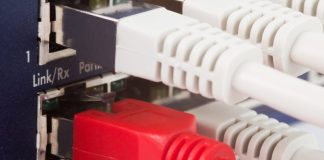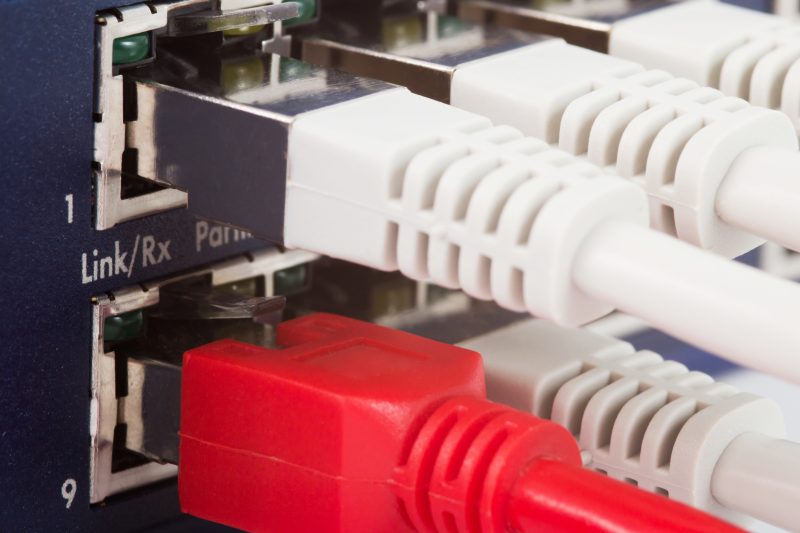Choosing the correct Ethernet switch is a key infrastructure decision. When your company has a reliable, fast Ethernet switch, employees can communicate quickly and without delays associated with sending emails, downloading files, and displaying information. Choosing the wrong Ethernet switch slows work and company production. The annual costs of a poorly performing network switch could mean paying for hundreds or even thousands of hours of employee time merely waiting for data to display. To understand the underlying value of choosing the correct Ethernet switches for your network, let us answer some key questions:
What is an Ethernet switch?
An Ethernet switch, also referred to as a network switch, is a piece of networking hardware that allows large numbers of servers, computers, printers, and other business devices to communicate with one another via wired connections. Ethernet switches generally transmit data exclusively. Another type of corporate switch is the PoE. The PoE or “power over Ethernet” switch provides DC through the network cable. These switches are used to power devices such as wireless access points, phones, or security cameras.
Ethernet switches manage and control data efficiently within networks by prioritizing and directing traffic to ensure that the devices that need the most information at any given time are receiving more than those that are not currently under heavy use.
What kinds of Ethernet switches are there?
Ethernet Switches fall into three categories:
- Small office or home
- Corporate
- Data center
Small office or home office (SOHO) switches are generally 4 to 16 port fanless switches. These SOHO Ethernet switches are designed to be small and quiet and generally have few set up options.
Corporate Ethernet switches are 24 to 48 ports and many offer PoE, as most corporate offices require PoE power for phones or wireless access points. These switches can be large modular switches, stackable switches or simply standalone switches. These are the workhorses of the Ethernet switch industry.
Data center Ethernet switches are high speed, very low latency switches. While PoE switches are designed to manage one cabinet or servers, data center switches do not provide PoE nor are they stackable. A data center Ethernet switch is a single purpose devices designed to pass data at very high speed. These are the most expensive switches.
Corporate switches are the most likely to be chosen for businesses and home offices. Corporate Ethernet switches are classified into three types:
- Managed
- Unmanaged
- Smart
A managed switch requires user configuration and can perform a wide range of customizable tasks such as:
- Speed adjustments
- Consolidation of end-users into subgroups
- Traffic monitoring
- Access restriction
- Activity reporting
Managed Ethernet switches have to be configured manually. They have the most configuration options of the three switches.
Unmanaged Ethernet switch cannot be configured manually and therefore its features are limited in comparison to a managed model. However, unmanaged switches allow users to begin using them as soon as they are powered on without the challenge of having to make any adjustments to their functionality prior to putting them to work in your network. They are a simple, no frills option.
Smart switches lack the functionality of managed switches. They do, however, usually offer telnet access, Web GUIs, and other features that are unique to them. Smart switches are designed primarily for offices that need speed, access or activity monitoring but do not have a network engineer available to manage the issues.
What about speed?
Most available corporate Ethernet switches support network speeds of 1Gbps to 10Gbps, with some higher end models offering speeds up to 100Gbps. As new technology continually demands higher performance, one can expect supported speeds to continue to increase. Most small business offices do not require the latest and greatest switch technology to improve their workflow. The way to judge how much speed improvement you might need is to consider how much time employees are accessing data through the network switch. The more time spent accessing data, the more likely any improvement in speed would help.
What are some port considerations?
Ethernet switches come in a variety of port configurations. Many are rack mountable for convenient stacking in cabinets. Consider how many devices you intend to include in your network, making room for possible future inclusions. A good rule of thumb is 1.5x the number of network cabling connections you expect to make is the number of network switches ports you should have available for all your devices.
Large data centers typically contain switches with up to 128 ports. When shopping for an Ethernet switch, you may be tempted by high speed data center switches. These will work in a corporate environment. Please do note that these switches do not offer PoE and they are not stackable. Refurbished data center switches make great corporate switches if you do not need PoE or stacking. It an be surprising how much speed an astute network engineer can deliver to an office by choosing the right switch.
Choosing a corporate Ethernet switch for a home offices and small business may not work as the management overhead and the fan noise may bother many people. Small 4 to 16 fanless devices usually work well. There are great high speed PoE home switches available from many sources for this growing home market.
Why do businesses use Ethernet switches?
Ethernet switches provide a boost in data management that allows for:
- Reduced network downtime
- Enhanced network performance
- Increased network bandwidth
- Improved network security
- Lower IT costs
How does an Ethernet switch differ from a router?
A switch is like a local post office. If it receives a letter (a data packet for a switch) for delivery to the same zip code (the same network range for a switch) it is delivered by that local post office. If the letter (or data packet) is for a non-local zip code (or not the same network range) it is routed to the regional post office. Simply put: switches switch to the same network. Routers route between different networks.
In fact, most routers can do a minimal of switching and many newer or layer 3 switches allow routing. However, routing and switching remain as distinct functions.
How does an Ethernet switch differ from a hub?
Like an Ethernet switch, a hub lets you create a network between your business devices. However, an Ethernet switch keeps track of the port addresses of plugged-in hardware and manages bandwidth requirements accordingly. A hub shares its bandwidth equally among all ports across all devices. By analogy, a hub is like a person sending messages using a giant megaphone at a crowded stadium. While all this extra noise may not be critical for small networks, one would see deteriorating performance and slowdown issues when using a hub for data intensive networks. A switched network using an Ethernet switch is a more focused, less contentious data delivery system.
What should you consider when buying an Ethernet switch?
The benefits of Ethernet switches can be significant, but to maximize the value of the device, choose one that aligns with your business priorities. Understanding the differences between Ethernet switches can help you identify the switch that is most appropriate for your needs. Key shopping points to keep in mind while you research are:
- Transmission speed
- Number of ports
- Your network infrastructure
- What features you require
- Business needs
- Budget
Sources
- Ethernet switch versus router; How to choose CDW
- What is a network switch and do you need one? NY Times
- How does a switch work? Cisco
- Ethernet switch Cisco
- What is an Ethernet switch and how to use it? Cable Solutions
- What us a network switch, and how does it work? Network World
- What is a network switch? Switch versus router Cloudflare


